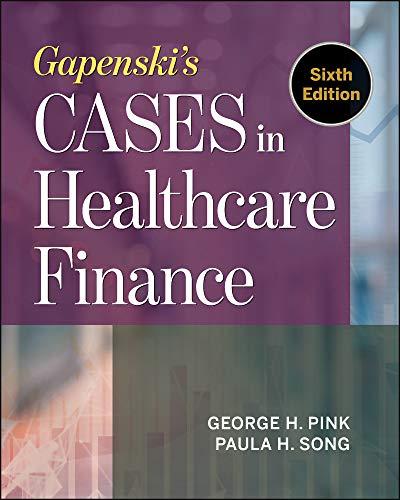Mr. Smith is the CFO of Suffolk Fasteners, Inc. and he is preparing for a meeting with SCC Bank to arrange the financing for the
Mr. Smith is the CFO of Suffolk Fasteners, Inc. and he is preparing for a meeting with SCC Bank to arrange the financing for the first quarter of 2020. Based on his sales forecast and the information he has provided (as detailed in the Situation below), your job as the companys new management accountant is to prepare the following budgeted reports for the First Quarter of 2020:
- Monthly Sales Budget
- Monthly Production Budget
- Monthly Direct Materials Budget
- Monthly Cash Budget
- Monthly (with Total for the Quarter) Budgeted Income Statements
- First Quarter Budgeted Balance Sheet
Situation:
Suffolk Fasteners, Inc. makes standard-size 2-inch fasteners, which it sells for $155 per thousand. Mr. Smith is the majority owner of the corporation and manages the inventory and finances of the company. He estimates sales for the following months in year 2020 to be:
| January............... | $263,500 (1,700,000 fasteners) |
| February............. | $186,000 (1,200,000 fasteners) |
| March................. | $217,000 (1,400,000 fasteners) |
| April................... | $310,000 (2,000,000 fasteners) |
| May.................... | $387,500 (2,500,000 fasteners) |
In 2019, Suffolk Fasteners budgeted sales were $175,000 in November and $232,500 in December (1,500,000 fasteners).
Past history shows that Suffolk Fasteners collects 50 percent of its accounts receivable in the normal 30-day credit period (the month after the sale) and the other 50 percent in 60 days (two months after the sale).It pays for its materials 30 days after receipt. In general, Mr. Smith likes to keep a two-month supply of inventory in anticipation of sales. Inventory at the beginning of December was 2,600,000 units. (This was not equal to his desired two-month supply.)
The major cost of production is the purchase of raw materials in the form of steel rods, which are cut, threaded, and finished. Last year raw material costs were $52 per 1,000 fasteners, but Mr. Smith has just been notified that material costs have risen, effective January 1, to $60 per 1,000 fasteners. Suffolk Fasteners uses FIFO inventory accounting. Labor costs are relatively constant at $20 per thousand fasteners, since workers are paid on a piecework basis. Overhead is allocated at $10 per thousand units, and selling and administrative expense is 20 percent of sales. Labor expense and overhead are direct cash outflows paid in the month incurred, while interest and taxes are paid quarterly.
The corporation usually maintains a minimum cash balance of $25,000, and it puts its excess cash into marketable securities. The average tax rate is 40 percent, and Mr. Smith usually pays out 50 percent of net income in dividends to stockholders. Marketable securities are sold before funds are borrowed when a cash shortage is faced. Ignore the interest on any short-term borrowings. Interest on the long-term debt is paid in March, as are taxes and dividends.
As of year-end, the Suffolk Fasteners budgeted balance sheet was as follows:
| Suffolk Fasteners, Inc. Budgeted Balance Sheet December 31, 2019 | ||
| Assets |
|
|
| Current assets: |
|
|
| Cash.............................................................. | $ 30,000 |
|
| Accounts receivable...................................... | 320,000 |
|
| Inventory....................................................... | 237,800 |
|
| Total current assets.................................... |
| $ 587,800 |
| Fixed assets: |
|
|
| Plant and equipment...................................... | 1,000,000 |
|
| Less: Accumulated depreciation................ | 200,000 | 800,000 |
|
Total assets..................................................... |
|
$1,387,800 |
| Liabilities and Stockholders Equity |
|
|
| Accounts payable............................................ |
| $ 93,600 |
| Long-term debt, 8 percent............................... |
| 400,000 |
|
|
|
|
| Common stock................................................ | $ 504,200 |
|
| Retained earnings........................................... | 390,000 | 894,200 |
|
Total liabilities and stockholders equity........ |
|
$1,387,800 |
Step by Step Solution
There are 3 Steps involved in it
Step: 1

See step-by-step solutions with expert insights and AI powered tools for academic success
Step: 2

Step: 3

Ace Your Homework with AI
Get the answers you need in no time with our AI-driven, step-by-step assistance
Get Started


